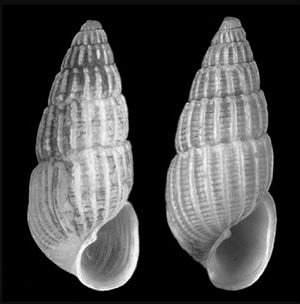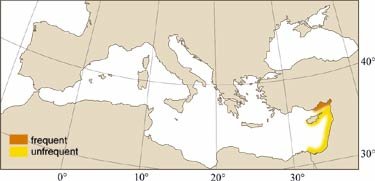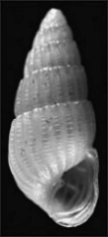
|
Relevant Synonyms
Misidentification
|
|
| 1- photo: S. Gofas / Coll. B. Galil |
|
SHORT
DESCRIPTION
color :
whitish. common size : 3-4 mm.
|
DISTINGUISHING CHARACTERISTICS
BIOLOGY / ECOLOGY
habitat :
live specimens from the intertidal zone; shells on beaches; dredged in 9-46 m depth. Southern Turkey: shells from detritus (9 m) at edge of Posidonia oceanica beds. Lebanon: 3m depth, on sandy bottom. |
|
1st
Mediterranean record
|

|
|
DISTRIBUTION
|
ESTABLISHMENT SUCCESS
speculated reasons for success :
|
|
|
MODE OF
INTRODUCTION |
IMPORTANCE TO
HUMANS |
|
KEY
REFERENCES
|
|
|
 Chrysallida decorata Philippi, 1849
Chrysallida decorata Philippi, 1849